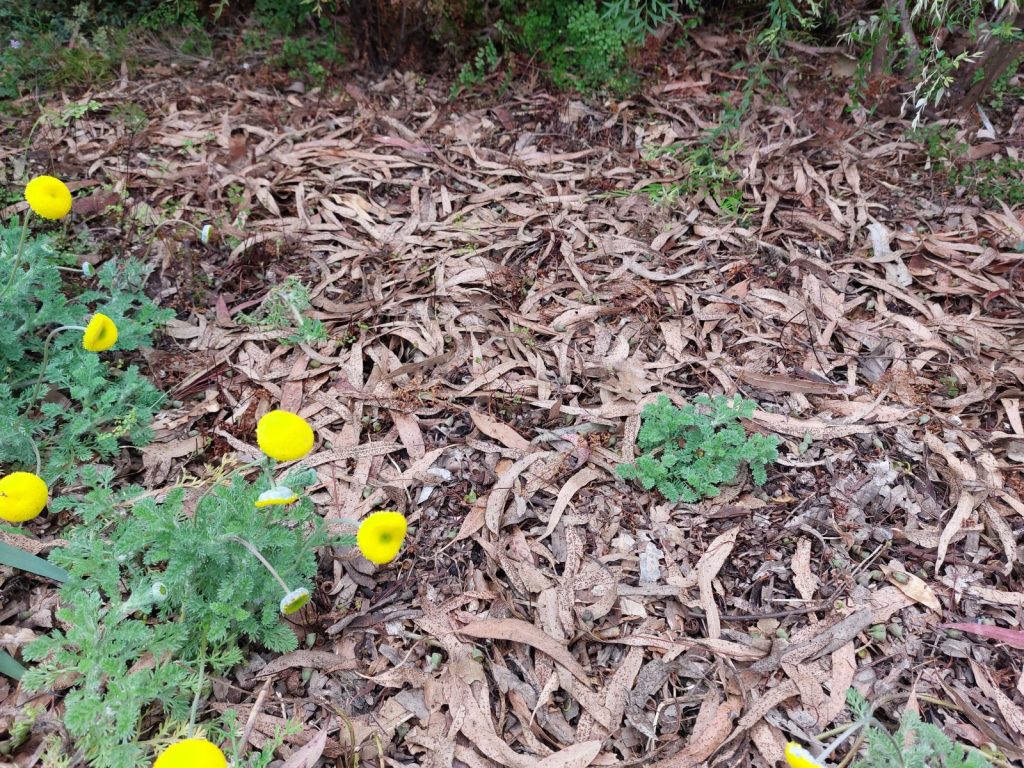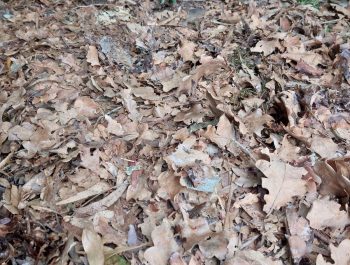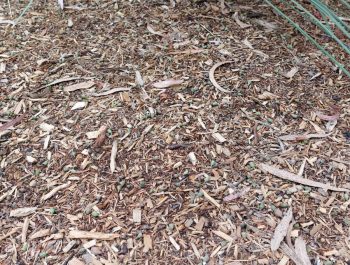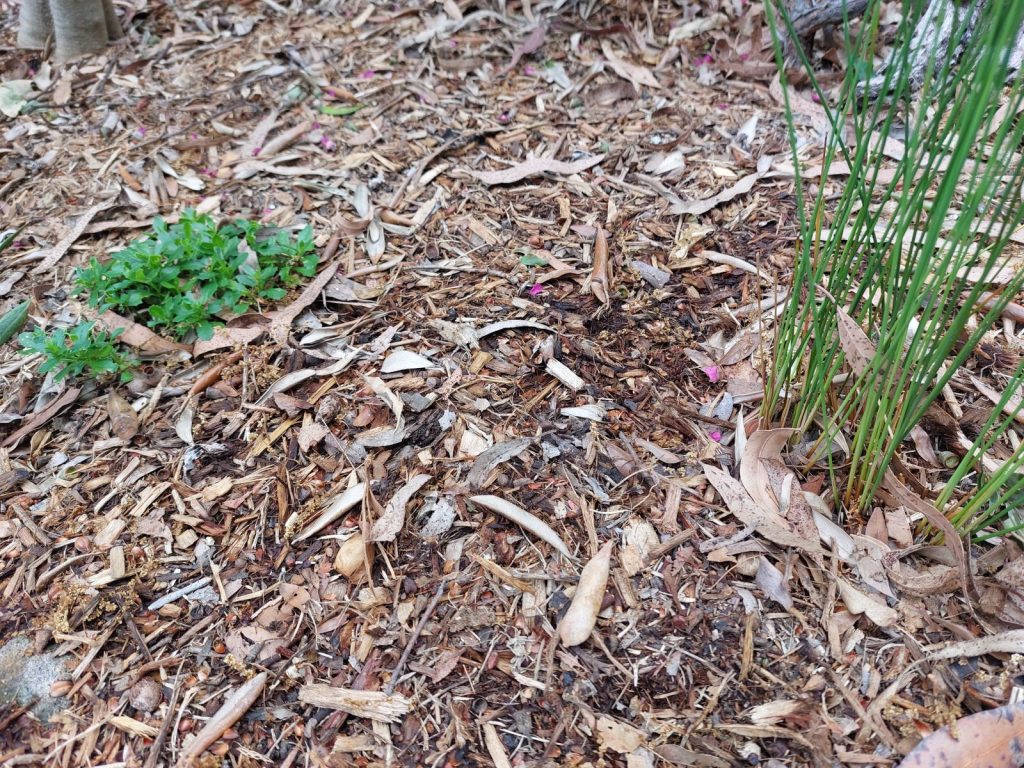There have been many articles written on mulch, and the following are my views together with the results of some research that you may find of benefit.
There are three types of mulch:
- Organic material such as eucalyptus leaf litter, wood chips, pine bark chips, compost, lawn clippings, pea straw, stable straw, lucerne, seaweed, hay, manure, sugar cane mulch, paper, etc.
- Inorganic mulch such as gravel, decorative pebbles, crushed rock, sand, etc.
- Living mulch: any dense-growing ground cover plant.
Why do we mulch native gardens?
The main reason is to simulate growing conditions in the bush, where leaf litter forms a natural and effective layer over the soil, especially in coastal regions. Additionally, mulch enhances the garden’s ‘Australian’ appearance.
How thick should mulch be applied?
In general, mulch should not be applied thicker than 75 mm. Applying mulch too thick can deoxygenate the soil, potentially killing plants.
Advantages of Mulch:
- Reduces weeds in an effective and safe way.
- Reduces evaporation, resulting in less watering.
- Keeps soil temperatures cooler in summer and warmer in winter.
- Organic mulches add nutrients as they decompose, improving soil structure and increasing biological activity (such as earthworms and beneficial microbes).
- Protects the soil surface from the compacting effects of rain.
- Living mulch adds flowers and interesting leaf textures.
- Eucalyptus mulch promotes micro-organisms that enhance plant health in native gardens.
- Improves the appearance of garden beds by giving them a natural look.

Disadvantages of Mulch:
- Soil must be wet/damp before mulch is applied.
- If applied too thick (50 to 100 mm), mulch can insulate the soil and prevent moisture penetration.
- Fresh, green organic material can deplete nitrogen in the soil as it decomposes, requiring added nitrogen (e.g., blood and bone) to compensate.
- Paper used under mulch as a weed suppressant can attract termites; using cypress mulch, a natural termite suppressor, may help.
- Organic mulch can coat the soil with a wax-like substance, causing sandy soils to become water-repellent. Soil wetting agents are effective to counter this.
- Mushroom compost is not recommended for acid-loving native plants due to its alkalinity.
- Organic mulch needs to be topped up every 1 to 2 years as it breaks down.
- Inorganic mulch can look untidy in gardens when leaves fall, and it can be difficult to remove them.
- Pine bark should be applied only once, as it contains a growth inhibitor that is released as it decomposes.



Mulching Tips:
- Before mulching, remove grass, weeds, and dead plants from the bed.
- Plant any new plants before applying your mulch layer.
- Mulch can be applied at any time.
- Consider your watering method before laying mulch. Drip soaker hoses placed beneath the mulch work more effectively. Water applied above the mulch may not reach the soil, so check after rainfall to ensure water has penetrated.
- Do not pile mulch against plant stems or trunks, as this can lead to trunk rot and plant death.
- Use inorganic mulch for native plants that thrive in low-nutrient soils.
- Choose your mulch based on the native plants’ natural habitat (e.g., gravel for drier inland plants or organic mulch for rainforest species).
